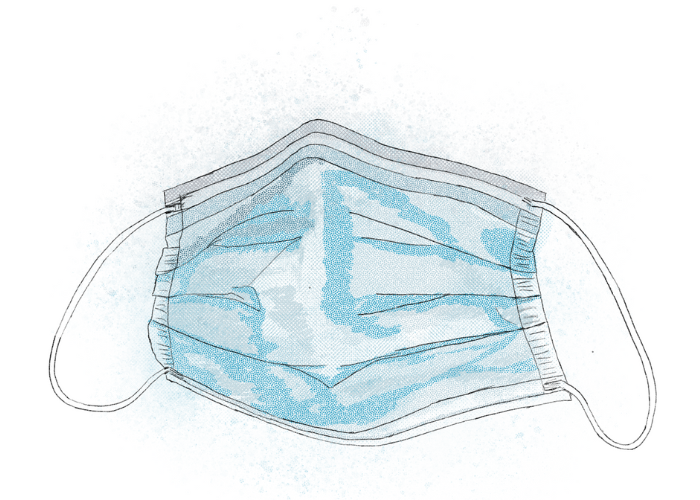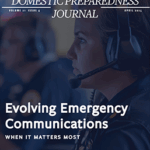Perhaps it is time to retire the term public health preparedness. Public health emergency preparedness has been defined as “the capability of the public health and health care systems, communities, and individuals, to prevent, protect against, quickly respond to, and recover from health emergencies, particularly those whose scale, timing, or unpredictability threatens to overwhelm routine capabilities. Preparedness involves a coordinated and continuous process of planning and implementation that relies on measuring performance and taking corrective action.” However, there is no currently agreed upon definition for public health readiness. As the COVID-19 pandemic emergency declaration sunsets and officials review their various public health actions, it may be time to collectively take the initiative to retire this term and replace it with public health readiness. Some background is in order before genuinely discussing the need for this paradigmatic shift.
The Preparedness Background
In the immediate aftermath of 9/11 and the anthrax attacks that followed, it became clear that the ability of the U.S. public health system to respond to a large-scale emergency was simply not in place, and the discrete discipline of public health preparedness emerged. Congress soon appropriated nearly $1 billion in FY2002 to the Centers for Disease Control and Prevention (CDC), which reorganized its preparedness activities to support states and territories, including creating a new national center known as the Center for Preparedness and Response. Interestingly, this center was initially called the Coordinating Office on Terrorism Prevention and Emergency Response, then renamed as indicated previously and, only recently, again renamed as the Office of Readiness and Response, reporting directly to the CDC director. Multiple grants, including the Public Health Emergency Preparedness and Cities Readiness Initiative, were soon developed and funds distributed to state and local health departments. Simultaneously, the Hospital Preparedness Program was deployed to bring a similar preparedness initiative, and funding, to the healthcare sector. All these grants were geared toward a greater state of preparedness with, at the time, no true definition of the term public health preparedness.
Even without a clear definition of preparedness, state and local health departments formed public health preparedness units. They moved forward with the development of various public health-specific contingency plans, purchase of communications equipment, compliance with Incident Command Systems mandates to coordinate with other, more traditional emergency response entities, and many other initiatives, not the least of which was the recruitment of public health preparedness subject matter experts. Almost ten years later, in 2011, the CDC developed and promulgated a set of 15 emergency preparedness and response capabilities, which now serve as the national standards for public health preparedness planning. The CDC made the latest updates to these capabilities in 2018.
Asking Necessary Questions
In this post-COVID-19 moment, it is necessary to reflect on whether the various preparedness grants made state and local health entities adequately prepared for the pandemic. Consider whether the different emergency exercises and equipment purchases made state and local health entities fully prepared for the difficulty seen in the following aspects:
- Procurement of personal protective equipment,
- The media and public backlash over fluctuating guidance,
- The increasing politicization of public health, or
- Other elements that made COVID-19 so challenging to respond to.
When answering questions related to these and many more issues related to public health and the public health role in emergency preparedness and response, the industry needs a more all-encompassing term to describe the various actions health agencies take before, during, and even after an emergency. Perhaps that term is readiness, as in public health readiness. This term makes sense when viewing preparedness as more of a physical state that speaks to capability and capacity. In contrast, readiness is more of a mental state, specifically being able to apply preparedness when needed; it is a mindset.
Readiness takes into account all of the previous elements that the preparedness grants encompassed but also includes other areas that COVID-19 has shown to be lacking, including supply chain management, a stronger relationship with emergency management, and an organization-wide commitment to public health emergency response. The CDC is thinking along these lines as an element of the next five-year cooperative agreement cycle with state health departments. They have been developing a “Response Readiness Framework,” with ten areas through which partners can look at the current 15 capabilities to move to a better state of readiness – these areas include data modernization, health equity, workforce readiness and resiliency, and others.
Regarding the public health workforce, readiness speaks to understanding how mental health and burnout would impact public health workers who sometimes labor 12-plus hours a day, seven days a week, to make the best decisions for the public they serve. The COVID-19 pandemic saw this issue resurface repeatedly, and this lesson should not be forgotten. Readiness also means considering the capabilities and capacity of the various volunteer community resources (such as Community Emergency Response Teams and Medical Reserve Corps units) and planning appropriately to utilize these resources to supplement health employees when and where applicable. These units were invaluable to many jurisdictions’ responses during the pandemic, and memorializing the lessons learned about their effectiveness is a critical readiness next step.
Another element of readiness, as it applies to the workforce, is ensuring that the public health workforce is adequately trained for the diversity of emergencies they may confront and that all feel comfortable in their roles. Again, look at the actions of the CDC, which recently announced that it would require all employees to be ready to deploy to combat national health crises, thus marking a drastic shift from a fragmented volunteer system that hampered its COVID-19 response. State and local health departments, which are integral partners in any large-scale public health emergency response, would also benefit from a paradigmatic shift such as this.
The Path Toward Readiness
Regarding preparedness and response roles, readiness speaks to a state where a jurisdiction or local health entity is ready for whatever emergency comes next and has the capabilities to respond appropriately. When looking at emergency planning efforts, there is a need to reconfigure existing emergency plans with the readiness factor in mind and ask the following questions:
- Do our plans speak to social distancing, such as what we experienced during COVID-19?
- As we absorb the lessons of COVID-19 and the outsized role of the media, have our efforts regarding crisis communication been sufficient?
- Is there some sort of training/exercise for public health officials to engage in when mitigating the politicization of public health seen in the recent past?
These elements of organizational readiness must, at minimum, be contemplated before moving forward.
The author would like to thank Andrew Pickett with the Pennsylvania Department of Health for his assistance with this article.

Raphael M. Barishansky
Raphael M. Barishansky, DrPH, is a public health and emergency medical services (EMS) leader with more than 30 years of experience in a variety of systems and agencies in positions of increasing responsibility. Currently, he is a consultant providing his unique perspective and multi-faceted public health and EMS expertise to various organizations. His most recent position prior to this was as the Deputy Secretary for Health Preparedness and Community Protection at the Pennsylvania Department of Health, a role he recently left after several years. Mr. Barishansky recently completed a Doctorate in Public Health (DrPH) at the Fairbanks School of Public Health at Indiana University. He holds a Bachelor of Arts degree from Touro College, a Master of Public Health degree from New York Medical College, and a Master of Science in Homeland Security Studies from Long Island University. His publications have appeared in various trade and academic journals, and he is a frequent presenter at various state, national, and international conferences.
- Raphael M. Barishanskyhttps://www.domesticpreparedness.com/author/raphael-m-barishansky
- Raphael M. Barishanskyhttps://www.domesticpreparedness.com/author/raphael-m-barishansky
- Raphael M. Barishanskyhttps://www.domesticpreparedness.com/author/raphael-m-barishansky
- Raphael M. Barishanskyhttps://www.domesticpreparedness.com/author/raphael-m-barishansky






